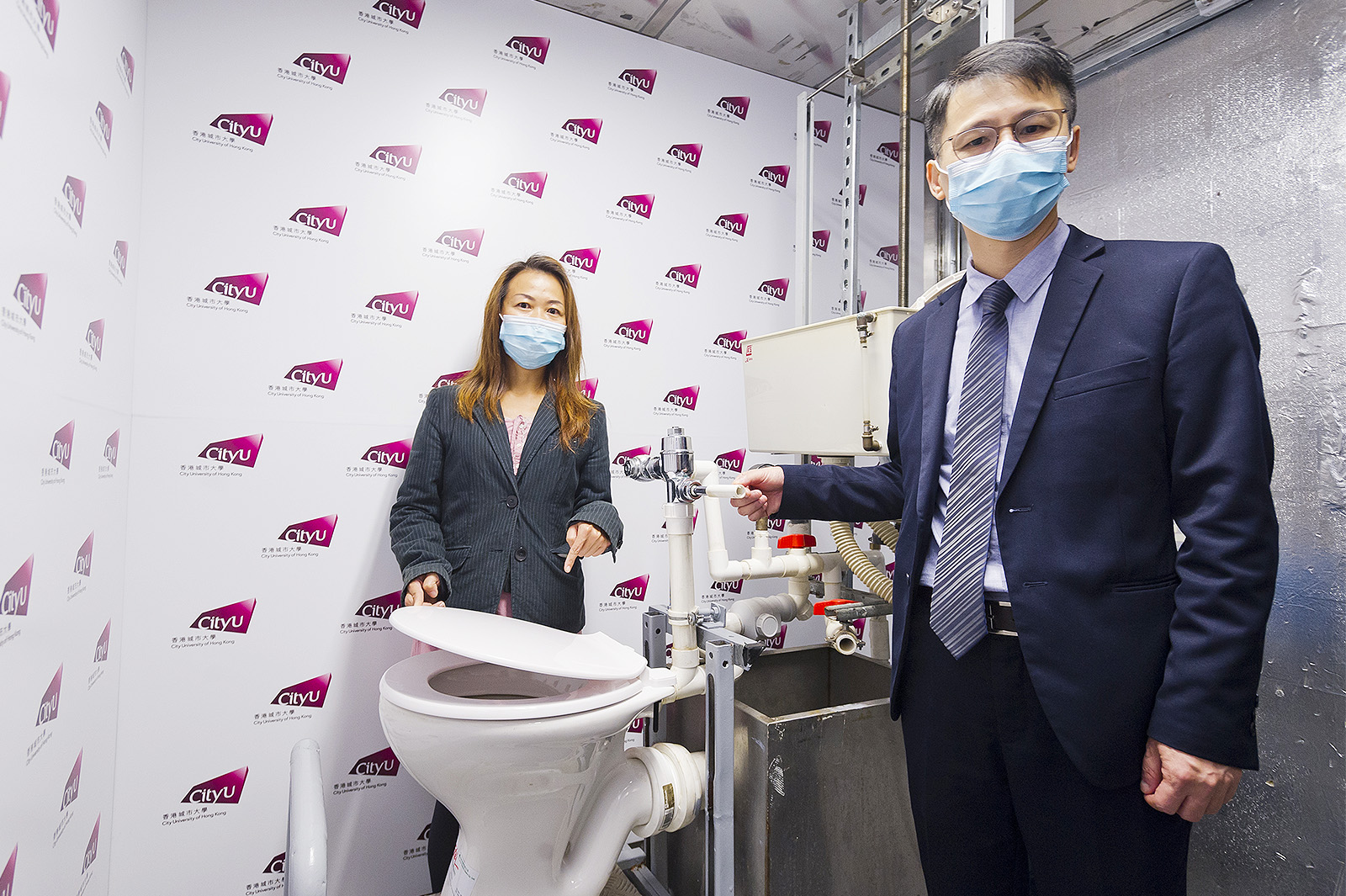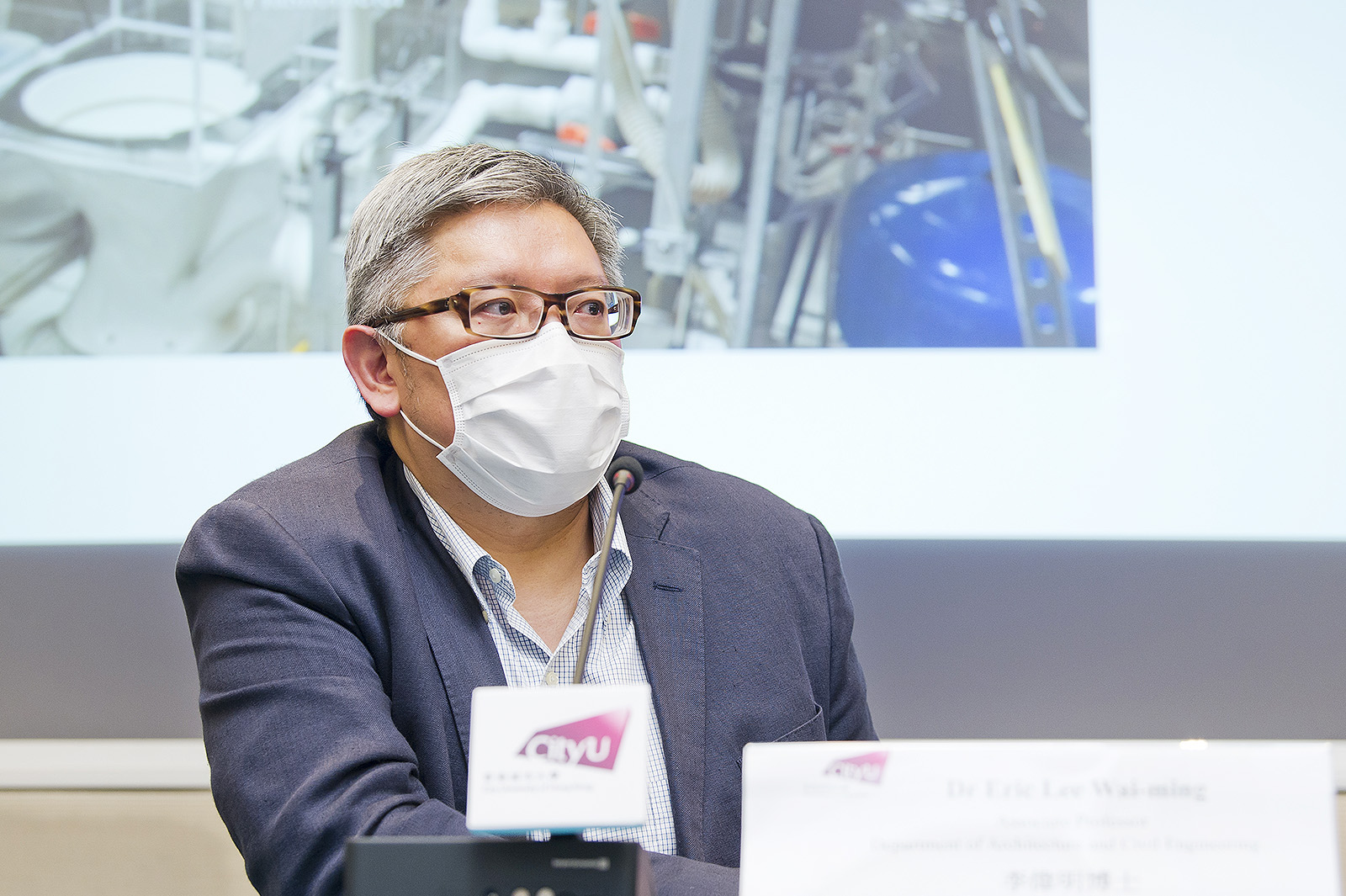Potential spread of pathogens via aerosol droplets produced by toilet flushing

Toilet hygiene has once again aroused public concern during the outbreak of the novel coronavirus epidemic. According to a study done by City University of Hong Kong (CityU), airborne aerosol droplets created in flushing might rise up to a metre if the toilet was not covered, and the pathogens embedded in the droplets can potentially spread and affect toilet users’ health.
The study was done by Professor Alvin Lai Chi-keung, Associate Head of the Department of Architecture and Civil Engineering in the College of Engineering at CityU, and his research team. They have studied the aerosol dynamics, bioaerosols control and engineering control for indoor air pollutants for years. In this study, they focused on the relationship between transmission of three types of bacteria of different sizes and the airborne aerosol droplets produced by four flushing systems commonly used in Hong Kong and mainland China, namely high-pressure flushometer, low-pressure flushometer, water tank installed at high position and water tank installed at low position.
By measuring the droplets with sizes between 0.3 to 10 micrometres, they have found that each toilet flush can produce approximately 14,000 to 80,000 aerosol droplets. All the four types can produce aerosol droplets rising up to one metre. But the flushometer type produces more droplets than the water tank type, and the higher the pressure of the flushing, the more the droplets. Among the four, the high-pressure flushometer type produce the largest amount of droplets, while the low-water tank type produce the least.
They revealed that bacteria can be spread in the air by aerosol droplets emitted from toilet flushing, thus contaminating the washroom. Also, the pathogens emission strength correlates with droplet concentration but correlates inversely with the size of pathogens. It means that the smaller the size of the pathogens, or the higher the concentration of droplet distribution in the air after flushing, the easier the pathogens can be transmitted into the surrounding area via the produced droplets.
When asking whether the study findings could be applicable to the novel coronavirus, Professor Lai said that since virus is much smaller than bacteria in size, it could be deduced that the concentration of virus in the air after flushing would be higher.
While covering the toilet lid before flushing can help to reduce bacteria-embedded airborne aerosol droplets from contaminating the air and the washroom, Professor Lai said that it does not entirely prevent the spread of pathogens. He explained that some international studies suggested that bacteria or polluted particles can still sneak through the gap of a few millimetres between the lid and the toilet bowl.
Moreover, multiple flushing may not help eliminate this problem since pathogens can stay on the surface of the toilet bowl for some time and be transmitted via aerosol droplets. When the pathogens are spread in the air, the surrounding area, including the toilet lid, wash basin, door handle and even the floor of the washroom will be contaminated.
Dr Iris Li Wai-sum, a member of the research team and a specialist in infectious disease, reminded the public to use 1 in 49 diluted household bleach to clean the toilet bowl regularly and 1 in 99 diluted household bleach to clean all areas of the washroom.
The team also advised the public to use the exhaust fan, if available, for 15 to 30 minutes after using the washroom. Switching on the fan for 15 minutes can already reduce 87% aerosols concentration, diluting the bacteria and viruses in the air.
They also reminded the public that to avoid creating a negative pressure inside the bathroom when using the exhaust fan, by partially opening a window or by making sure a decent gap on the bathroom door to let the air in the bathroom replenish.
Dr Eric Lee Wai-ming, Associate Professor from CityU’s Department of Architecture and Civil Engineering, provided supplementary information on the relationship between sewage systems and hygiene conditions in indoor habitats. He also suggested cleaning the exhaust fan regularly, and using the small-flush function, if it is a “dual-flush” toilet, so as to reduce the number of droplets created.

